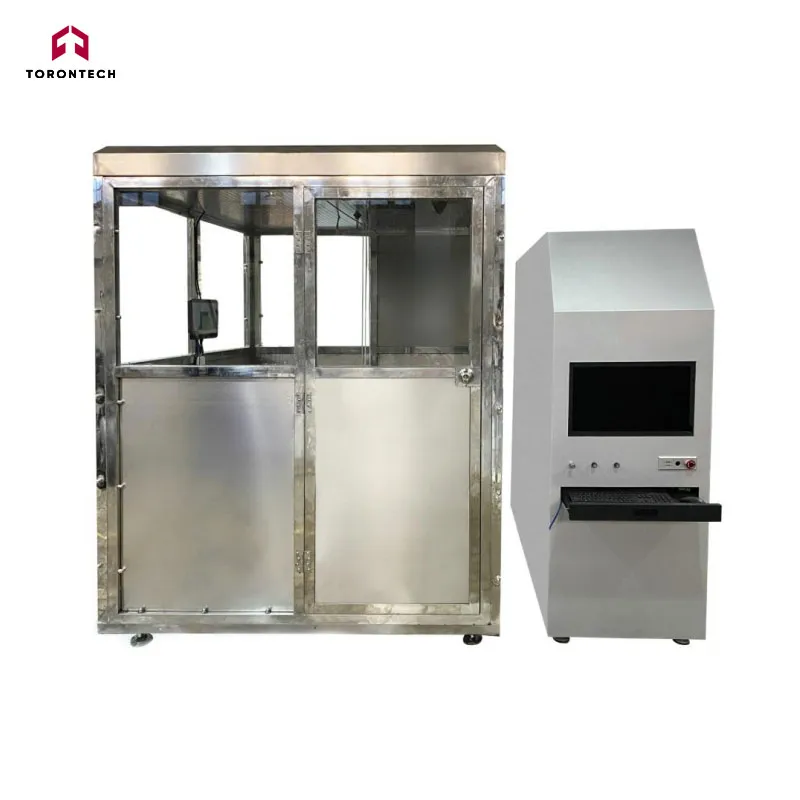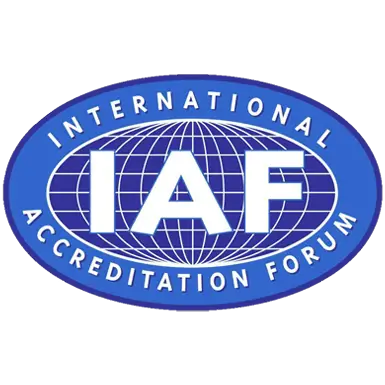Face Mask and Protective Clothing Testing Equipment - Protective Clothing and Face Mask Leakage Tester
Protective Clothing and Face Mask Leakage Tester
Protective Clothing and Face Mask Leakage Tester ToronFMPC-LT is evaluated for its ability to shield against solid airborne particles, including radioactive contaminants. The testing process measures "inward leakage (%)" by calculating the ratio of contaminant concentration in the surrounding atmosphere to the concentration inside the suit.
Standards
- ISO 13982
- BS EN ISO 13982
- EN149
- EN 1073-1-2016
- GB/T 29511-2013 Protective clothing- Chemical protective clothing against solid particulates 4.3.1, Annex A
- GB 2626-2019Respiratory protection-Non-powered air-purifying particle respirator 6.4
- GB 19083-2010Technical requirements for protective face mask for medical use ANNEX B
Control and Analysis System
The testing process is managed by a central control console with computer-programmed automation. Key features include:
- Automated monitoring of test data.
- Calculation of individual and overall inward leakage rates.
- Automatic computation of average inward leakage values.
- Generation of test results in multiple formats.
A standard aerosol of sodium chloride particles is introduced into a test chamber. Inside the chamber, a participant wearing the protective suit performs a series of predetermined exercises. Flame photometry is used to measure inward leakage at various sampling points inside the suit. The following indicators are used to assess the performance of the protective clothing:
- Lijmn: Inward leakage for a specific test subject (i), suit (j), exercise (m), and sampling position (n).
- Cijmn: Aerosol concentration measured at the sampling position inside the suit for a specific test subject (i), suit (j), exercise (m), and sampling position (n).
- Ls: Total inward leakage per suit (average across all exercises and sampling positions).
- LH: Total inward leakage per participant (average across all exercises, sampling positions, and suits worn by that participant).
- LE: Total inward leakage per exercise (average across all suits and sampling positions).
- Lp: Total inward leakage per sampling position (average across all suits and exercises).
- LEP: Total inward leakage per sampling position and exercise (average across all suits).
- L: Mean total inward leakage (average across all participants, suits, exercises, and sampling positions).
| Model | ToronFMPC-LT | |
|---|---|---|
| Environmental Requirement | Working Temperature | (20±5)°C |
| Humidity | ≤60% | |
| Used Space | ≥4000×5000×3000mm, water in/drain pipe, room with good ventilation | |
| Walked-in Testing Room | Inner Effective Size | 1800mm×1500mm×2100mm (L×W×H) |
| Outer Size of Testing Room | 1950mm×1650mm×2500mm (L×W×H) | |
| Control Cabinet | 700mm×700mm×1600mm (L×W×H) | |
| Environmental Analog Detection System | Particle Aerosol Concentration | (10±1) mg/m³ |
| Aerodynamic Size Distribution of Particle | (0.02~2) μm | |
| Mass Median Diameter | About 0.6 μm | |
| Concentration Variation in Effective Space | ≤10% | |
| Occurrence Amount | ≥100L/min | |
| Particle Concentration Detector | 2 Sets | |
| Dynamic Range | (0.001~200) mg/m³ | |
| Accuracy | ±1% | |
| Response Time | ≤500 ms | |
| Horizontal Pedal Drive Test-bed | Running Speed | (5±0.5) km/h |
| Other Accessories | Air duct circulation and maintenance of cleaning equipment | |





